FratBoxes: How to Start a Company This Weekend for $25, and do $150 in Sales
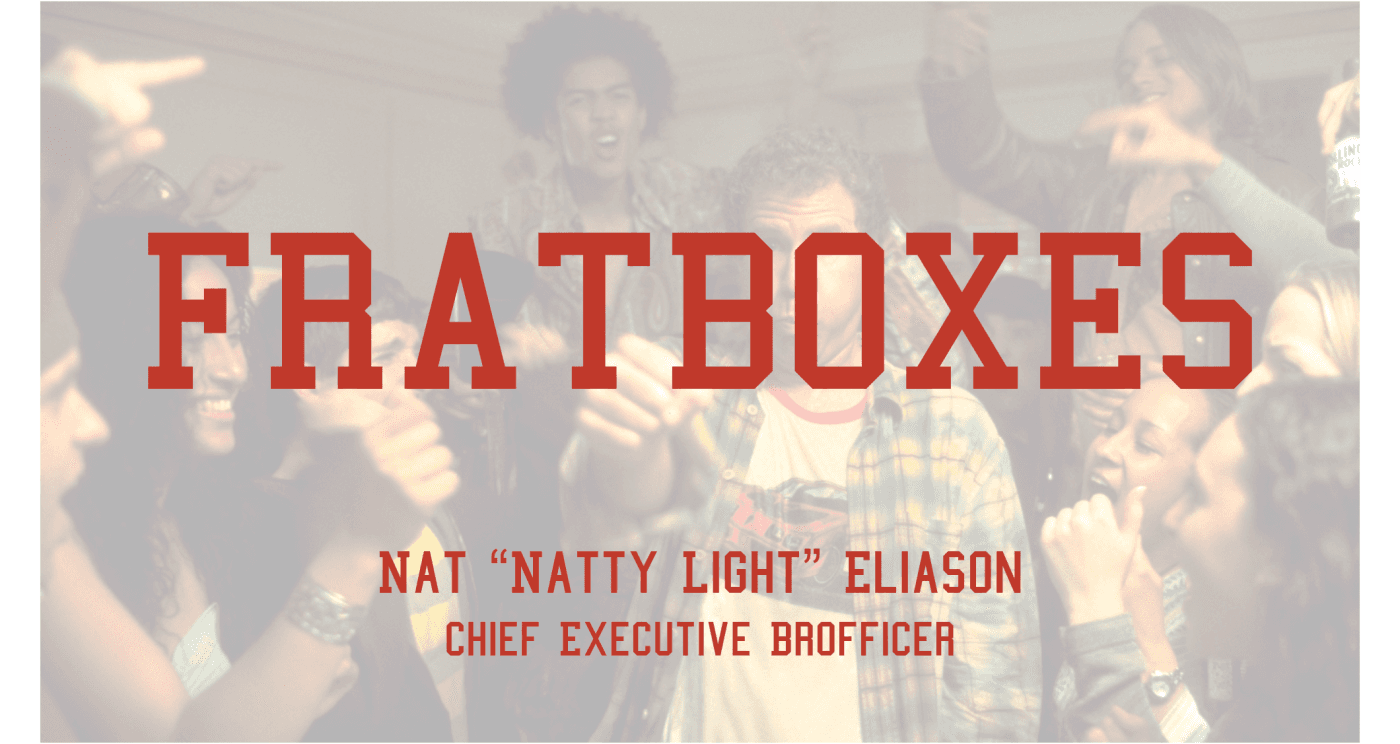
Startup Weekend is an event held across the country throughout the year to encourage people to experiment with starting their own companies. The way the weekend works is simple:
- Show up. On Friday night, if you have an idea, awesome, you get to pitch it. If you don’t, no worries, you can work on someone else’s.
- Pitch. Friday night, everyone who has an idea pitches it. You get one minute to convince the audience that they should support your idea and work on it with you.
- Vote. After the pitches, the audience gets to vote on their favorite ideas. The top 10 (usually out of ~40-50) get selected as the startups for the weekend.
- Team Up. If your idea was chosen, put together a team from the audience. If it wasn’t, then join one of the ideas that was.
- Hustle. Get to work! You have until Sunday evening to get as far as possible with your startup. There will be some local entrepreneurs and experts to help you, but for the most part, you’re on your own.
- Present. Sunday night all of the teams get up on stage and present their startup and how far they got over the weekend. You have 5 minutes to convince a panel of judges that you have the best idea and hustled the most.
- Winner! The judges deliberate and decide a first, second, and third place, and dole out some startup-related prizes to help you continue working on your idea.
For someone who’s never done anything entrepreneurial the event is amazing. It forces you to take action over a very short amount of time, and can show you just how easy it is to get started on a company of your own.
In Fall 2013 I went with the idea for Tailored Fit, competed, and won. At the end of the event, one of the people who’d been on a winning team at the previous startup weekend gave a gag presentation on “Taco Shots.” Given how much the audience loved that break from the otherwise serious event, I decided to pick up the mantle and do a gag company of my own.
After a short stint at the whiteboard my teammates and I came up with “FratBoxes.” A subscription service for fraternities to never run out of supplies for throwing great parties.
It combined two very important elements: it was a company idea that could be easily tested, and given the target market it had the potential to have a comical feel to it. It’d be hard to create a hilarious presentation about a company that’s designed a new stapler. Imitating the stereotypical douchebaggy frat-bro? That’s pretty easy.
Day One: Put the Idea Out There
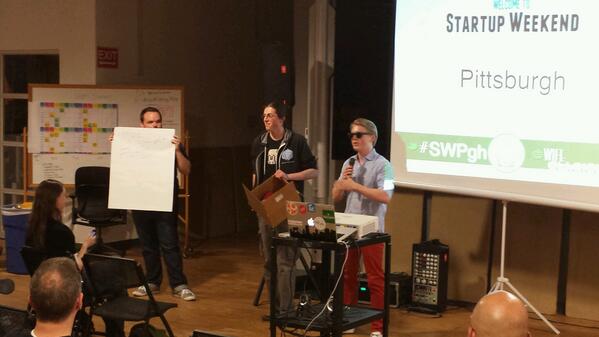
My only goal on Friday, day one, was to put the idea and character in everyone’s head. I donned my pastel blue button down, bright red pants, boat shoes, wayfarers, and got to work.
The audience thought the pitch was hilarious, and were legitimately confused about whether I was serious or not. Perfect.
Normally, you would put up a giant sticky note somewhere in the room so people could vote on your idea or ask to work on it with you. Since I wasn’t taking this seriously I hid mine and went home.
Day Two: How to Start Up Quickly and Cheaply
Bright and early Saturday morning I went back to the startup weekend office space. The goal today was to set up FratBoxes just enough to make it look like a legitimate company.
In the process I stumbled on a new understanding of what “minimum viable product” means. The term (usually abbreviated “MVP”) refers to the absolute simplest version of your product and was popularized by Eric Reiss in The Lean Startup.
For example, if you were going to build an MVP for Lyft, instead of building the app and hiring a bunch of drivers and spending a ton on ads trying to popularize it, just ask one of your friends if they’ll pay another one of your friends (who they don’t know) to drive them somewhere. No app needed, and it emulates the basic function of the app.
I’d love to be able to say that my MVP for FratBoxes was inspired by a brilliant commitment to simplicity, minimalism, and the lean startup… but that’s not true. I was there for the weekend to have fun, not to actually compete, so the MVP was based on laziness. I asked myself what was the least amount of work I could do to make it look legitimate, and that’s what I did.
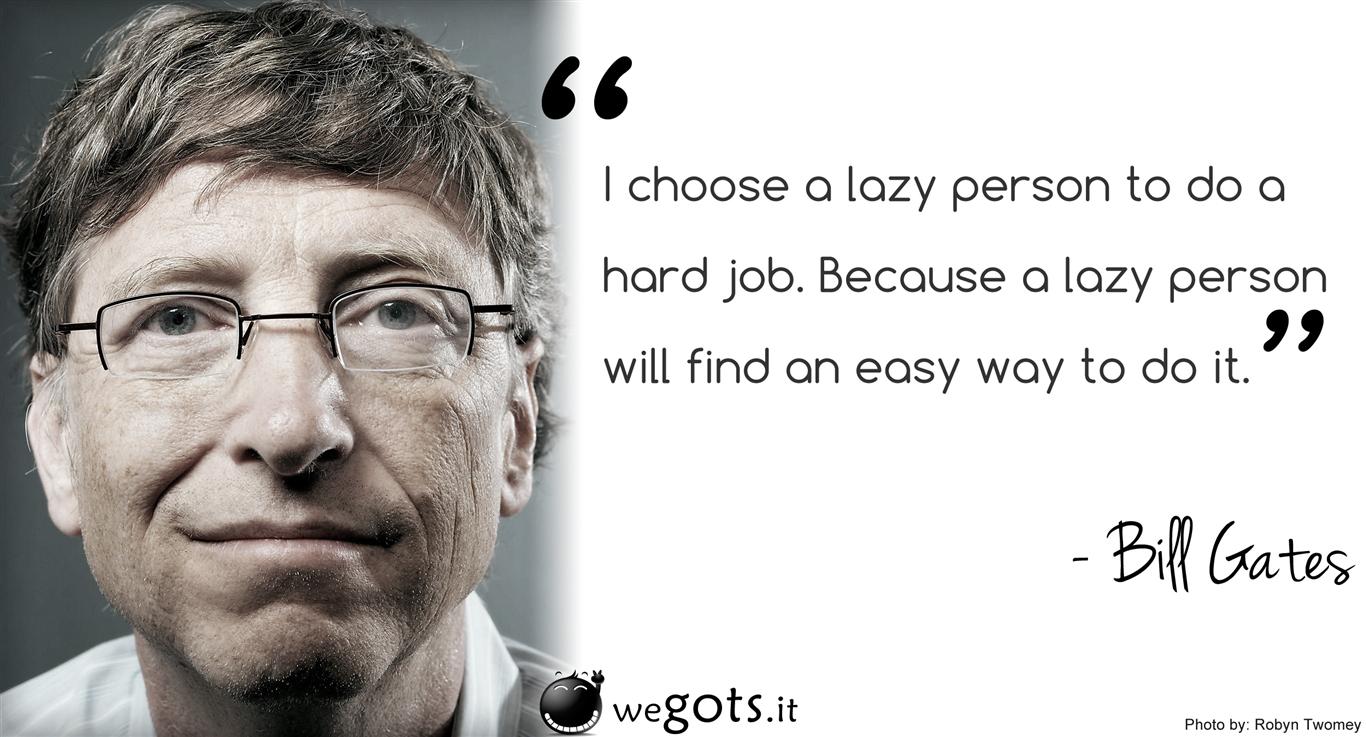
The biggest mistake I see people make not just at Startup Weekend but when starting up in general is they waste time obsessing over things that won’t matter unless they have some early success (I know I’ve done this). They freak out about the design of their site, its name, the copy, and all of these things that won’t matter if no one wants to pay for it.
Again, I only realize this in retrospect. At the time I was just being lazy…
The Method
This formula could be used to test tons of business ideas. You have to vary it slightly based on your industry and preferred marketing method, but the underlying principles are the same. Don’t get stuck in the mentality of “oh what I’m doing is too complicated for this to work.” Also, no coding necessary.
1. Find an Idea.
Notice I didn’t say “perfect” idea, or “THE” idea. The point of this method is that you can quickly figure out in a couple of days whether or not your idea has legs, instead of pulling a WebVan and spending $375 million dollars to figure out that no one wants your product. The less emotionally invested you are before testing it, the better you’ll be able to assess it objectively. I don’t think we spent more than 30 minutes on the idea. Obviously our situation was different because we were looking for a middle ground between “markets we have some understanding of” and “markets that are really easy to make fun of.”
If I were going to try to find a more serious idea, I would:
- List out all of the things I do on a day to day basis (from making tea in the morning to longboarding to foam rolling at night).
- Look for aspects of those things that are either slightly frustrating, could be improved, or where I’ve hacked together a solution that could be better solved with technology. One example: I check my blood glucose most mornings (not diabetic, just curious) but then I have to manually enter the info into an Evernote spreadsheet. There’s a connected blood glucose monitor for iPhone, but why not Android? And why doesn’t it have an API for connecting to life logging services like Exist.io?
- If I were coming up blank, I’d ask my friends about their hassles instead. The one problem with this is that you risk getting into a market you don’t understand, like a group of three guys I met who were starting a women’s menstrual health company.
2. Find a Name/URL.
This step isn’t strictly speaking necessary, but as more and more business moves online having a website can give you an increased perception of legitimacy. That said, you can easily try to make sales without a website and I’d encourage it. This just made things easier. Anyway, we liked the name “FratBoxes” and www.fratboxes.com was available. Bingo. I’d actually recommend you iterate on your name while checking available domains at NameCheap. It sucks to think of a great name only to realize all of the good domain suffixes are taken.
3. Setup the Site.
I do everything through BlueHost since they make it really easy to buy a domain and set up WordPress on it.
I’ve also heard good things about NameCheap. Either way, once you have your domain, go through the one-click install guides for setting up WordPress. If you’re completely lost on this step, check out this video.
4. Find a Great WordPress Theme.
If you’re not familiar with WordPress it’s a “what you see is what you get” website builder that makes it incredibly simple to design your own site without any coding knowledge. At last count, over 15% of the Internet is built on it. Once you have it installed on your site you just need to find a nice theme and plug in the information you want. Finding one is as easy as Googling “Best WordPress Ecommerce Themes.” Many of them will be free.
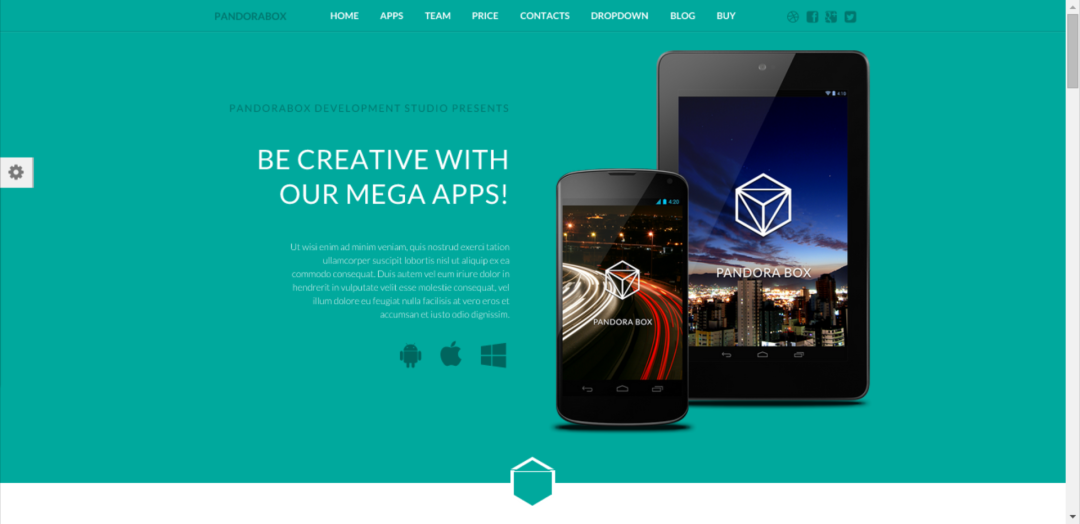
Luckily I already had a theme that I’d gotten in a free giveaway, so I was able to just plug it in. Here it is if you want it.
5. Write Some Really Basic Copy.
This area is easy to get hung up on. You want your landing page to be perfect, so you spend hours tweaking the wording until it’s just right. That can come later, don’t worry about it for now. Just put something down that makes it crystal clear what you’re offering. Once I had my first draft done, instead of obsessing of it myself, I sent a quick email to 25 of my friends who were in fraternities (the target market) and asked for their feedback. About a dozen of them responded with suggestions I was able to implement, which saved me a lot of time trying to guess how to improve it.
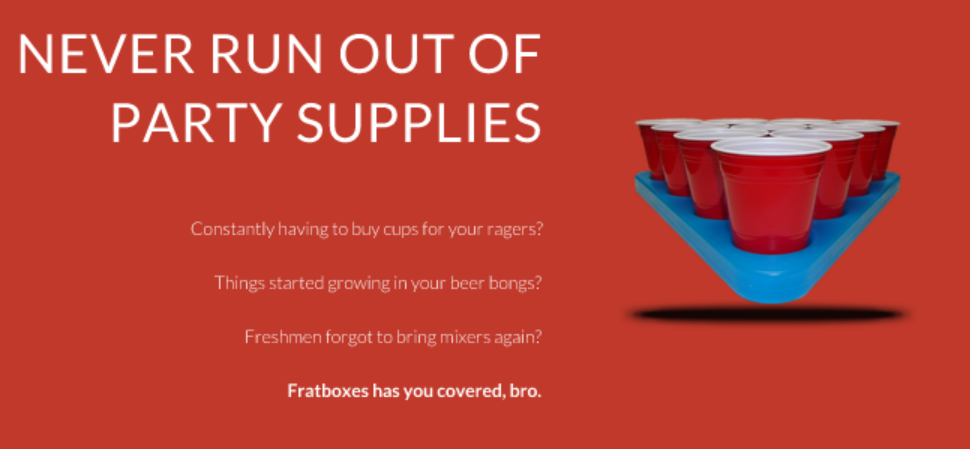
6. Set Up Social Media.
One caveat: I did this because I wanted to use Twitter to get early customers. If you’re not actively selling on social media don’t make accounts to feel productive. This is another area where people end up spinning their wheels and obsessing over the wrong thing. Anyway, I created a Twitter and Facebook page under the Fratboxes name and used the same pictures and copywriting that I used on the site. Then I went to www.fiverr.com and paid 10$ for 5,000 twitter followers (6 months later it’s down to 3,600) and 2,000 Facebook likes (down to 1,100). You thought popularity couldn’t be bought? Think again.

57 tweets and 3600 followers? Seems legit…
Pumping up our followers/likes like this was just to create a false sense of popularity so people would feel more secure buying from us. Deceptive? A little, but if you pay close attention there are a lot of Silicon Valley Startups that have 1 to 5 thousand followers who don’t speak English.
Funny side note: a number of the other Startup Weekend teams FREAKED OUT when they saw how many twitter followers we had. Followers / likes / pageviews mean NOTHING. They’re a “vanity metric.” The only thing that matters is sales or users.
Alternatives to trying to make sales through Twitter activity might be setting up Facebook or Google ads. Those would both be easier, but I really didn’t feel like spending money.
7. Set Up Payments.
I wasn’t originally planning on doing this, but I decided it’d be fun for making the site look authentic and for learning how PayPal works. I created some subscription buttons and plugged them into the WordPress theme (still no coding required) so that people could sign up for the three different levels (the links don’t work now for reasons I’ll explain later) of FratBoxes.
This whole process: buying the domain, installing WordPress, picking the design/copy, setting up the social media, setting up PayPal, and then getting feedback and making edits on it took less than three hours and cost less than 25$. Considering this was the main part of “establishing the business” you can see how easy it is to get started.
One Important Thing to Note: When figuring out what to include and how to price it, I didn’t spend more than 15 minutes on Amazon and Alibaba getting a rough idea of what everything would cost. I cobbled together some estimates based on wholesale costs and then multiplied everything by two to get my initial prices. I could have spent hours figuring out the optimal ways to price everything… but if no one wants your product it doesn’t matter.
In the meantime my teammates hit up Target to get some pong balls, solo cups, etc. to create an “example box” that we could use on the website and in our presentation.
8. Tweet Up a Storm
Now that everything was set up, the fun began. I took to Twitter and started tweeting up a storm playing the part of the douchey frat bro… but a douchey frat bro selling FratBoxes. I tweeted at other fraternity accounts and products (a lot of these tweets were later deleted) and leveraged my personal account to make it look like there was more noise around the product than there actually was.
After an hour or two people started taking notice:
Seems like an interesting concept “@fratboxes: For those who missed it, here’s a picture of the very first fratbox! pic.twitter.com/1DFAzWR3Ux”
— USABlackout (@USABlackout) April 9, 2014
Whenever people found it they usually had one of three reactions: “Omg I love this idea,” “Omg is this a real thing?” or “Omg I hate fraternities this is terrible.” All three were great for driving us more traffic.
One person in particular found the site and spent all day tweeting to his 30k followers about what a cool idea it was and how they should all check it out. I gave him a special bit.ly link and he alone drove a few hundred page views.
Then something weird happened: someone actually signed up. Not only did they sign up, they signed up for the $50 a month package. To be perfectly honest, I was not expecting that. But there it was, $50 in my paypal account with a subscription to pay $50 each month until they canceled in order to receive the “Brother President” monthly box.
We promptly celebrated by buying a keg for everyone at Startup Weekend.
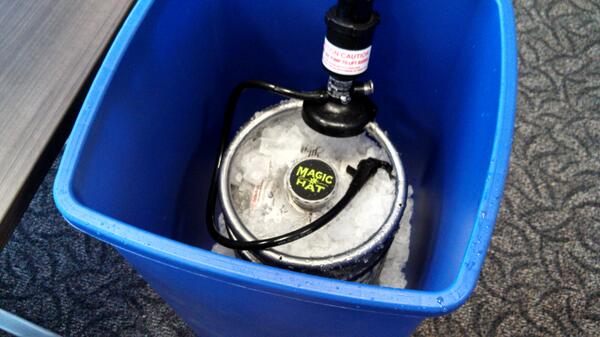
Natty Light would have been more appropriate… but I wanted everyone to actually enjoy their beer
Day Three: How to Rock the Presentation
Day three was dedicated to one thing only: the presentation. What many people forget about with an event like Startup Weekend is that the judges and audience have absolutely no idea what you’ve been doing for the last few days. You could have the most successful company by far, but if you don’t communicate that in your presentation you will lose. The presentation is the only thing they have to judge you on. The same thing goes for case competitions, investor pitches, and any other time in life you need to condense a huge amount of work into a few minutes.
So even though I wasn’t actually competing, I spent all of day three making the funniest presentation possible. I’d talked to the event coordinator in advance and asked him to not announce that I was presenting so that I could come on at the end as a surprise.
The presentation’s humor came from two things: the different eccentric personalities in the Pittsburgh startup community, and the things many other companies would focus on in their presentations that didn’t actually mean anything. Although the inside jokes about Pittsburgh might not make sense, the startup jokes are universal:
- I cited 5,000 twitter followers as a clear indication that it was a good business idea
- I had a greyed out Paypal payment that was “clearly not from me”
- I had hockey stick graphs everywhere “projecting” our future growth
- I had a pyramid scheme. We referred to it as our “triangle plan”
- I had faked quotes from “market research”
If you want to see the full thing, here are the slides:
And here’s the video (you kind of need them together since the slides don’t show up on the video):
So what happened?
The presentation was a huge hit, driving more traffic (from people tweeting about it) to our site and resulting in two more signups for the top package.
In 48 hours it had gone from gag pitch, to semi-legitimate looking company, to doing $150 in sales, while spending less than $25 on setup and marketing. Not bad.
Next Steps?
Ultimately I didn’t continue on with Fratboxes. I considered it, but I didn’t enjoy shipping the boxes or finding new things to put in it month to month. It wasn’t a market I was very passionate about. I removed the PayPal links and cancelled the recurring payments, but I decided to leave the site there just for fun.

